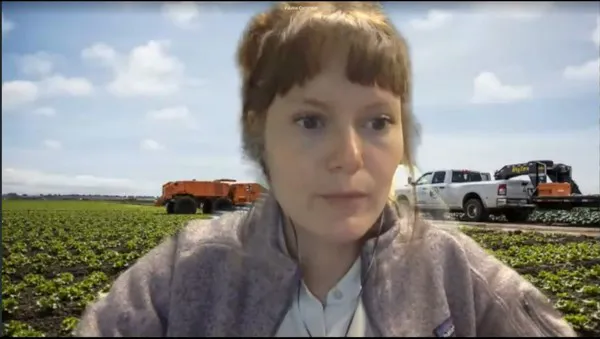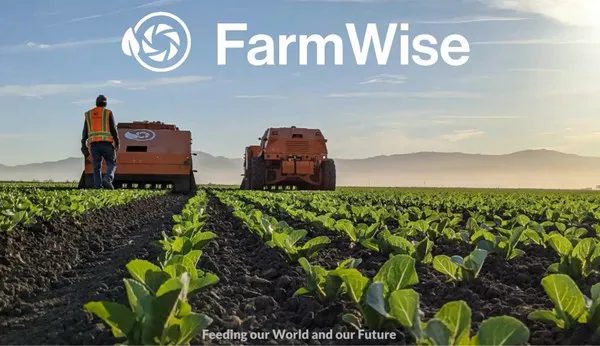The 'Exploring Bejo's World' online event's last day focused on agriculture's future. Pixelfarming Robotics and Farmwise introduced their answer to the question of how to meet the labor shortage. The growing labor shortage means the agribusiness sector is increasingly pursuing automation.
Pixelfarming Robotics
First, Arend Koekkoek, Pixelfarming Robotics's CEO, took participants to their greenhouse in the Netherlands. Live on location, he discussed the Robot One. This machine controls weeds without using pesticides.
![]()
Arend Koekkoek
Growers today face several challenges in ensuring food safety. These include soil depletion and increasingly limited permitted chemicals. Many growers depend on these. "There are solutions, but they're very laborious," Arend begins. "Our research has shown that growers want to control weeds, preferably without chemicals. But they also want less labor intensity in the field. And higher yields with healthy soil."
This engineer wants to solve these problems. He describes this solution as pixelfarming. In the session, Arend discussed a part of this that uses robots can decrease labor intensity. "You want a robot you can teach exactly which field to work in. Also which lanes to drive in, and what belongs, and, especially, what doesn't belong. That's what we've done with the Robot One."
![]()
You can program the Robot One for every situation. "The machine has ten robot arms. These can all be programmed individually using the accompanying software. So, you can set the desired width, depth, or angle per arm for the best precision. Each arm can be fitted with a different type of tool too. You can, thus, use the robot for multiple purposes per trip. Whether it's planting, spraying, or mowing," explains Arend.
"Vision technology means the robot's ten cameras can detect the ground over which it's moving. It, therefore, works around the crops, resulting in high-precision work." Arend considers this machine the solution for the future.
The electrically-driven machine is fitted with solar panels. That lets it drive autonomously, back and forth through the fields' rows all day. "A single operator could control five machines side by side. And you can finish five hectares per hour," the CEO explains enthusiastically as he shows the machine from the greenhouse. "You can easily and quickly replace its arms' tools too."
Arend compares operating this machine to flying a drone. "You don't have to be an expert, and we're always there to help. But it takes similar skills and a solid knowledge of computers to set up the machine. We aim for ease of use. The Robot One must become the new multifunctional field worker."
![]()
Pixelfarming is working with institutions like Beljo and various universities. They gather know-how which should eventually end up in the robot. "We also like getting in touch with several crop experts. That is so, in the future, we can give growers the tools they need for every type of crop," Arend concludes.
Farmwise
Pauline Canteneur introduced Farmwise's solution in a subsequent session. "We've noticed that growers need to do more with drastically less," begins this U.S engineering firm's Head of Business Development. Pauline agrees with Pixelfarming's observation. There is high demand for sustainable products. And a growing labor shortage. That means there is an increasing need for automation in the agribusiness sector.
"There are very few crop protection products available in America. So companies have to have 15 or 20 workers manually hoeing the land. That creates both high costs and high labor intensity. Over the last few decades, there have been more and more developments. These are meant to give growers the tools and solutions to lower labor costs. We want our machine to be the next step in that."

Pauline Canteneur
The company wants to make this step with the Titan FT-35. "This is a fourth-generation, automated, mechanical weed controller. It uses a type of facial recognition for crops. We've developed an algorithm the machine uses to detect the difference between weeds and crops' stems. The machine has 12 independently adjustable robot arms. It can, therefore, work around any type of crop, extremely precisely," explains Pauline.
"It's, however, not yet fully automated, and has to be supervised by an operator. Our focus is on expanding to multiple crops, beyond the green ones with which we currently work. We want to gradually get to having an operator who can control multiple machines. After that, it should get to where he can do so remotely."
Unlike Pixelfarming, Farmwise does not sell its machine. They provide a service and have 14 machines available to growers. "We're responsible for the entire process. Simply put, our operators come by, take care of everything and leave again," continues the Head of Business Development.
The company gets paid per acre for this. "That varies by field. It depends on the soil, crop, and organic cultivation. It can, say, be cheaper if the crops are very dense. We then get done quickly. It's more expensive if more careful work is needed. However, we always agree on the amount in advance. So there's no risk or additional cost. That works."
This young company wants to eventually make the move to Europe. "That's definitely interesting for us. We built the machine for huge American cultivation companies. But we have good relationships with European companies. So, in the next two years, we certainly want to see if it can be used on European soil as well," Pauline concludes.
For more information:![]() Pixelfarming Robotics
Pixelfarming Robotics
Email: info@pixelfarmingrobotics.com
Website: www.pixelfarmingrobotics.com
 Farmwise
Farmwise
Email: contact@farmwise.io
Website: www.farmwise.io
